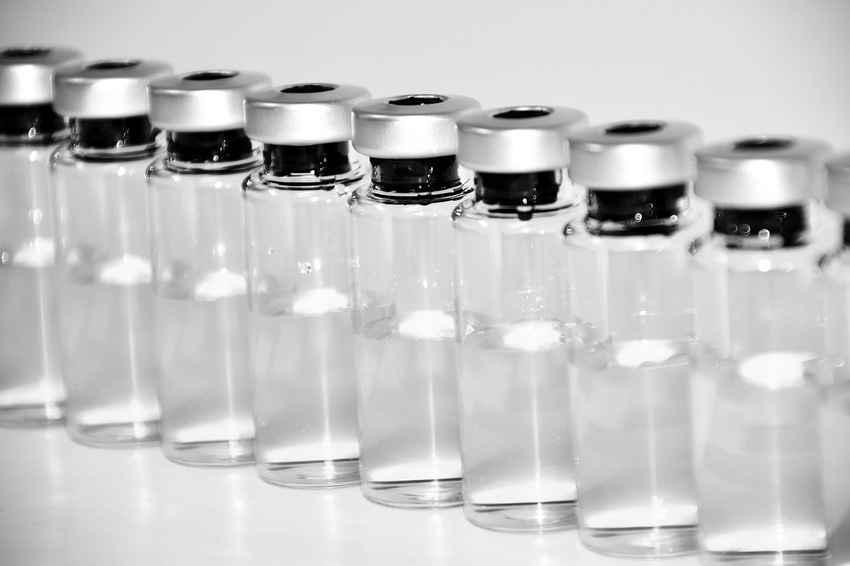National Animal Disease Preparedness & Response Program allows USDA to enter into cooperative agreements on animal health research projects, such as FMD vaccine development.
April 1, 2020

The world knows how quickly a virus can spread, as the SARS-CoV-2 coronavirus that causes COVID-19 continues to extend its reach across the globe.
The coronavirus epidemic reminds U.S. livestock producers how critical it is to have a vaccine bank in advance of a foreign animal disease (FAD) threat like foot and mouth disease (FMD), according to the U.S. Animal Health Assn. (USAHA), an organization made up of leaders from government, industry and academia working alongside producers.
While FMD is not zoonotic (it affects cloven-hooved animals only), its economic impact would be significant if it were to hit the U.S. According to the U.N. Food & Agriculture Organization, “the global annual cost of FMD in terms of production losses and the need for prevention by vaccination has been estimated to be approximately $5 billion. In a severe event in 2001 in the United Kingdom, the direct and indirect impacts are estimated to have cost as much as $30 billion.”
Getting the ball rolling
The 2018 farm bill established the National Animal Disease Preparedness & Response Program (NADPRP), which allows the U.S. Department of Agriculture's Animal & Plant Health Inspection Service (APHIS) to enter into cooperative agreements with states, universities, industry and other entities on projects and research to advance animal health.
It further established the National Animal Vaccine & Veterinary Countermeasures Bank (NAVVCB) to maintain sufficient quantities of vaccine and other countermeasures to help address an outbreak of FMD or other high-consequence FADs. In addition, it reauthorized the National Animal Health Laboratory Network with appropriations of $30 million per year.
On March 30, APHIS announced that it had established a consultation board to assist the agency with implementation of the NADPRP, USAHA said. The consultation board will recommend annual funding priorities, provide input to improve program policies and processes, nominate experts to review and rank funding proposals and make recommendations for the program’s annual spending plan. Read more about who will serve on that board here.
Call to action
Response to a FAD often includes mass depopulation of animals, but the USDA FAD PReP plan for FMD is contingent on vaccination for all but the smallest, localized outbreak. Unfortunately, the U.S. currently does not have access to enough FMD vaccine to handle more than a very small, localized disease event, said USAHA members.
According to the USAHA Committee on Animal Emergency Management, “Worldwide vaccine production is limited, and there is no surge capacity to produce the millions of doses needed to address a large-scale outbreak in the U.S. The cumulative impact of an outbreak on the U.S. beef and pork sectors over a 10-year period would be more than $128 billion. The annual jobs impact of such reduction in industry revenue is 58,066 in direct employment and 153,876 in total employment. Corn and soybean farmers would lose $44 billion and nearly $25 billion, respectively, making the impact on these four industries alone almost $200 billion. A workable FMD vaccine bank can minimize the impact on the U.S. economy and reduce government costs of a catastrophic FMD outbreak in the U.S.”
As a result, the organization passed the following resolution: “USAHA urges USDA and state animal health authorities to support a total of $92 million for the NAVVCB, with a minimum of $20 million for each of the first four years and $12 million in the fifth year, of the funding established in the 2018 farm bill to provide adequate number of doses of foot and mouth disease vaccine and surge capacity. This $92 million for NAVVCB is to include a reasonable stockpile of foreign animal disease testing kits/reagents needed for outbreak response.
“Additionally, the 2018 farm bill prevention funding the NADPRP should not be used to fund current USDA-APHIS activities with the states, nor should it inhibit full appropriation of the National Animal Health Laboratory Network laboratory authorization within USDA, National Institute of Food & Agriculture, Food & Agriculture Defense Initiative and APHIS budgets.”
Progress being made
In January, APHIS announced the progress it's making to implement programs funded by the 2018 farm bill, including moving forward with developing an FMD vaccine bank.
A number of USAHA members have held the vaccine bank as a priority issue, including the National Pork Producers Council and the National Cattlemen’s Beef Assn., among others.
Specifically, APHIS announced that it is awarding $10.2 million to support disease prevention and emergency response training. As part of this funding, APHIS is moving forward with developing the NAVVCB. The first priority of the bank is to increase the U.S. stockpile of FMD vaccines.
APHIS is also issuing a request for proposals and plans to have the initial FMD vaccine contracts in place by the end of the second quarter of fiscal 2020, and the agency's goal is to invest between $15 million and $30 million on the vaccine by the end of this year.
Dr. Sarah Tomlinson, associate deputy administration of APHIS Veterinary Services, has said 2020 will bring "great strides” in developing an FMD vaccine bank.
Members of USAHA and industry welcomed these advances.
“U.S. pork producers and other farmers are currently faced with a wide range of challenges,” National Pork Producers Council chief veterinarian Dr. Liz Wagstrom said. “A solution for FMD preparedness is in our grasp. We urge USDA to move as quickly as possible to establish the bank.”
USAHA president Dr. Marty Zaluski, state veterinarian for the Montana Department of Livestock, agreed, adding, “We are fortunate within USAHA to have such a unique cross-section of people who work together to protect and improve the health of the U.S. livestock industry. Our work on the vaccine bank is just one example of the many initiatives USAHA has supported.”
You May Also Like



